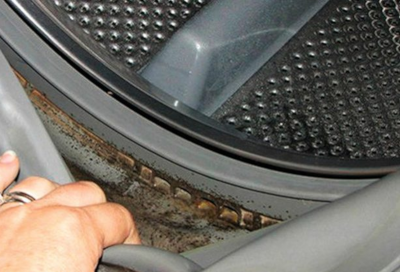Samsung washing machine is leaking
Water leaks from the washing machine are almost always related to controllable circumstances that are easily remedied. To figure out what is causing this, try the following steps.

Samsung washing machine is leaking
Recommended Articles

Samsung washing machine water fill issues
Samsung washing machines use various technologies to minimize how much water is used. Automatic temperature control also reduces how much hot water is used by mixing in cold water as much as possible. In addition, Samsung washing machines are high efficiency (HE) and use significantly less water than previous generations while still getting your cl

Washing machine has a mildew smell or visible mold
When moisture or other residue (such as leftover detergent or other additives) is trapped in a dark place, it may promote the growth of mold and mildew and may cause unpleasant odors. If your Samsung washing machine has visible mold or a mildew smell, let us show you how to take care of it.

Laundry is stained or damaged after using Samsung washing machine
It can be frustrating to have clothes come out worse than when you put them in the washing machine, but in the vast majority of cases, any stains or damage that weren't there when you put them in the washer, aren't actually caused by your washer. Routine maintenance and cleaning, combined with the proper use of additives, will often correct and pre
We're here for you
Contact Samsung Support
Contact us online through chat and get support from an expert on your computer, mobile device or tablet. Support is also available on your mobile device through the Samsung Members App.


Call or Text Us
Give us a call
How can we help you?
1-800-SAMSUNG
1-800-SAMSUNG
1-800-726-7864
1-800-726-7864
-
Mobile 8 AM - 12 AM EST 7 days a week
-
Home Electronics & Appliance 8 AM - 12 AM EST 7 days a week
-
IT/Computing 8 AM - 12 AM EST 7 days a week
-
Text Support 24 hours a day 7 days a week
Fast, easy checkout with Shop Samsung App
Easy sign-in, Samsung Pay, notifications, and more!
Or continue shopping on Samsung.com

×
×
×
You Are About To Be Redirected To Investor Relations Information for U.S.
Thank you for visiting Samsung U.S. Investor Relations. You will be redirected via a new browser window to the Samsung Global website for U.S. investor relations information.×
Redirect Notification
As of Nov. 1, 2017, the Samsung Electronics Co., Ltd. printer business and its related affiliates were transferred to HP Inc.For more information, please visit HP's website: http://www.hp.com/go/samsung
- * For Samsung Supplies information go to: www.hp.com/go/samsungsupplies
- * For S.T.A.R. Program cartridge return & recycling go to: www.hp.com/go/suppliesrecycling
- * For Samsung printer support or service go to: www.hp.com/support/samsung
Select CONTINUE to visit HP's website.















